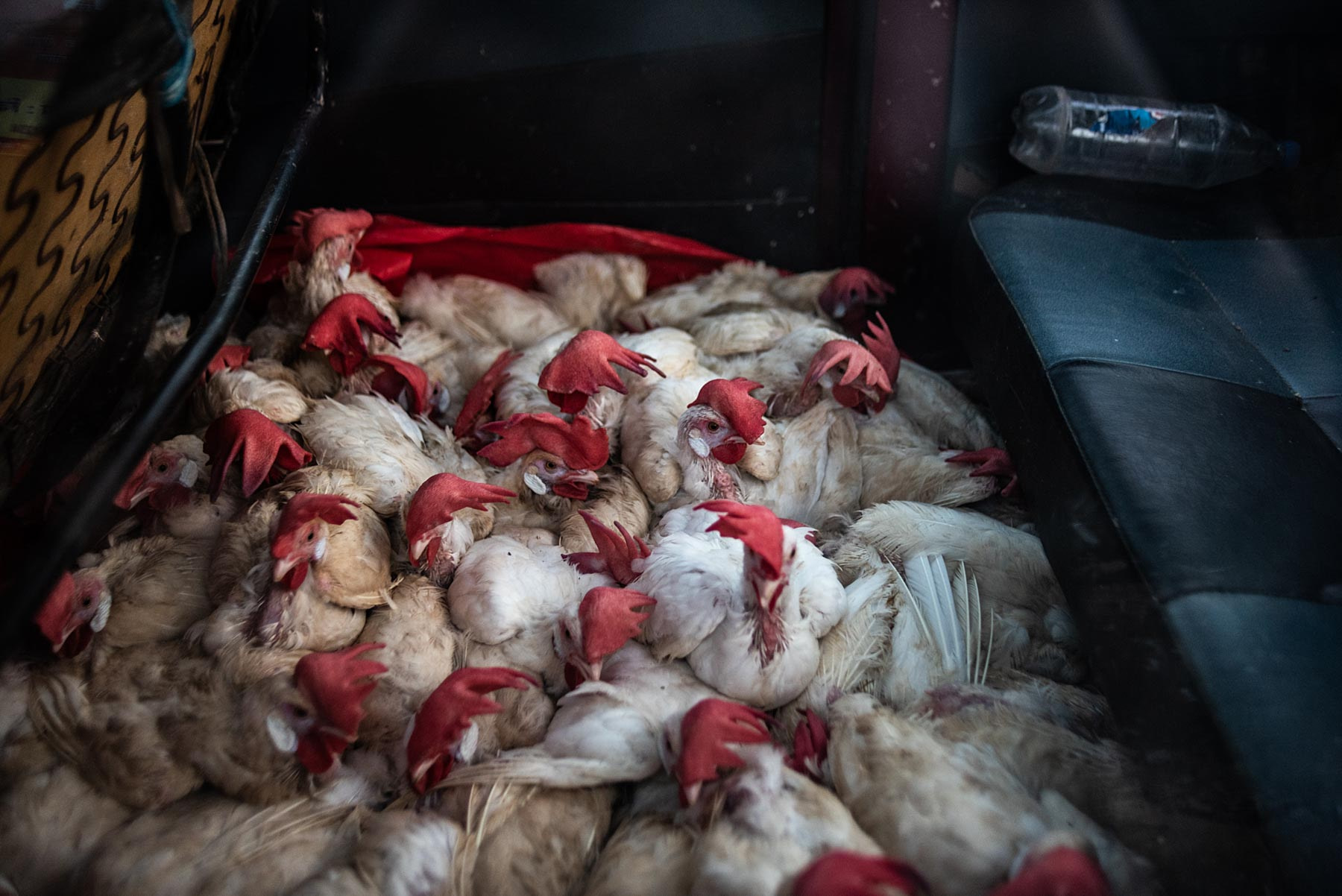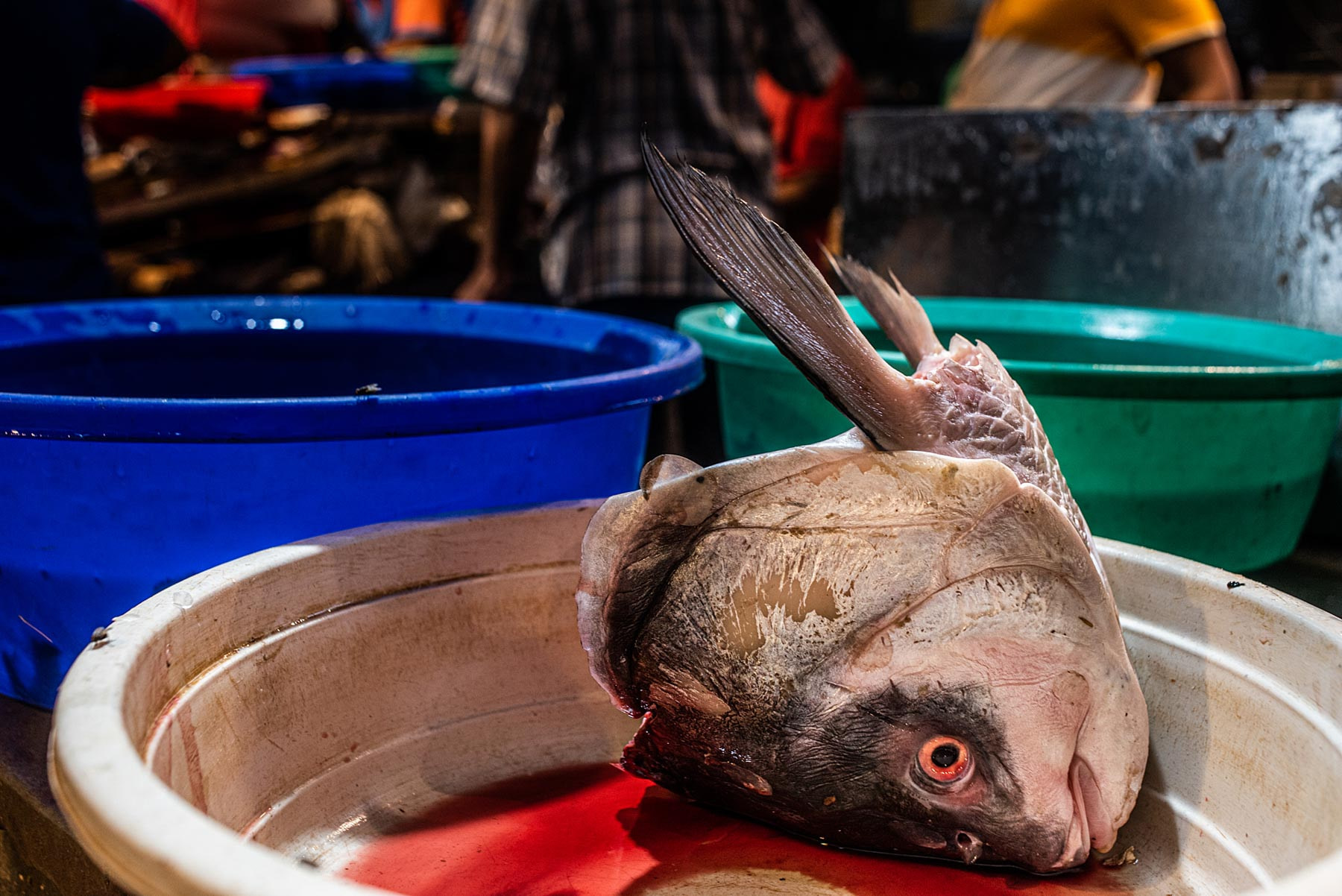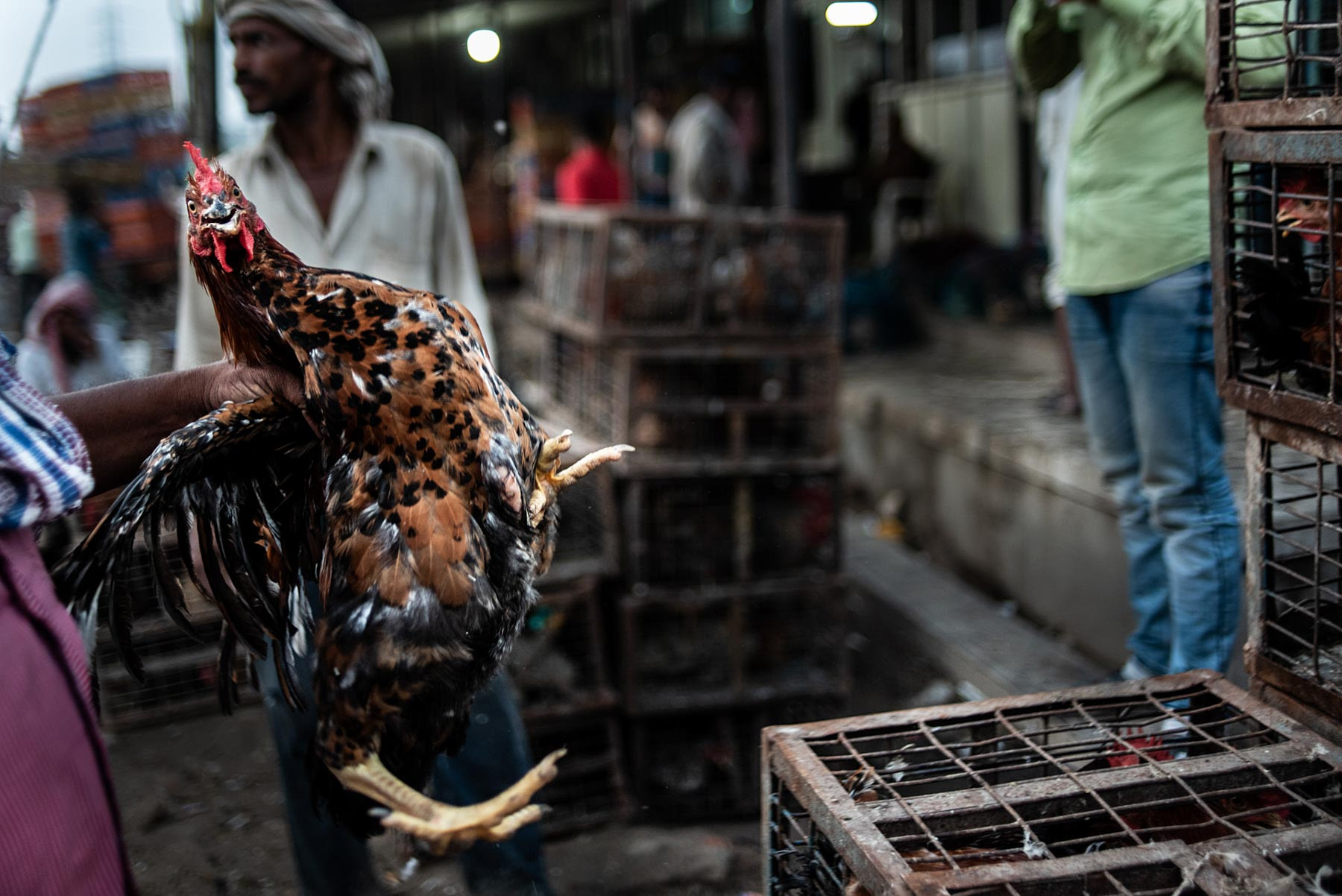A frightened hen looks out through the slit of the plastic crate where she has been packed in with the others for transportation. Ghazipur, New Delhi, Delhi, India, 2021.
Shatabdi Chakrabarti / We Animals
[Content warning: Contains confronting images and/or video footage]
A We Animals investigation has uncovered shocking conditions at a live animal market in Ghazipur, at the border of Delhi and Uttar Pradesh, Northern India.
Our photojournalist, S. Chakrabarti, documented injured, diseased and stressed animals kept in unhygienic conditions at Ghazipur market. The images and video footage captured expose the harsh reality for animals trapped within India’s food industry.
Photographer and Videographer: S. Chakrabarti
A busy morning at the fish wholesale market, as customers line up to buy the best of the produce. New Delhi, Delhi, India, 2021.
S. Chakrabarti / We Animals
With approximately 88 wholesale poultry shops and about 250 fish shops, it is one of India’s largest meat and fish markets. This mandi, as it is known in the Hindi language, supplies meat to almost all areas in India’s National Capital Region and is situated next to one of Ghazipur’s largest landfills.
“Being such a multicultural and diverse nation, food plays a very important role in India in terms of a person’s cultural identity. Communities here are strongly linked to their occupations. People who are fishers and fishing communities along the coasts belong to particular castes. People who rear cows and are in the dairy business, largely belong to one caste. The same goes for butchers. As these are ancestral occupations, the livelihood angle is also an important aspect which cannot be ignored. But, increased population and consumption has led to a decrease in resources. Because of this imbalance between supply and demand, there has been a rapid increase in battery farming of poultry and fish, which leads to the ways of supply going unchecked.” — S. Chakrabarti, Animal Photojournalist
Live chickens are being transported on the floor of a van, after their legs have been tied together into a bunch. These birds will be distributed amongst local meat sellers and butchers. Ghazipur, New Delhi, Delhi, India, 2021.
S. Chakrabarti / We Animals
At the Ghazipur market, truckloads of poultry and fish start arriving at 5:30am. Each poultry truck carries live birds in crates stacked on top of one another, which are then distributed amongst the market’s numerous shops. Many of the birds are sold live to smaller vendors who resell them at their local markets. The remaining birds are butchered and slaughtered in the market itself, and sold whole or cut into smaller pieces, separated and sold by weight and body parts. The market’s cement floor is a stagnant, wet, slippery mix of water from melted ice, fish bodily fluids, and the dirt from workers’ and customers’ shoes.
Since the COVID-19 pandemic, these kinds of live or “wet” markets have provoked global concern as probable vectors for human-animal disease transmission.
“While shooting this assignment, I was not perturbed by the blood and smell and gore so much. What affected me was the sheer cold attitude that the people had towards these chickens and fish. One butcher slaughtered and cut a bird in front of the other poultry, who sat like mute spectators in their cage. When one of the fish vendors pulled out a live fish from a tank to show to a customer, no one seemed to notice that the fish struggled in pain. Animals feel fear and stress and pain.” — S. Chakrabarti
The birds are transported to the market and kept in metal cages or plastic crates and housed in unhygienic conditions. Many birds show signs of skin diseases, stress, and trauma. They express fear as they are roughly handled for transportation ahead of slaughter. As they await their turn to be decapitated, the birds have a clear view of the butchering and slaughtering process.
The body of a freshly slaughtered chicken thrashes around on the butcher’s slab. As the body moves, blood continues to drain out. CR Park Market No 2, New Delhi, Delhi, India, 2021.
S. Chakrabarti / We Animals
Walking catfish that are being kept in a tank are seen struggling for space as they writhe and push each other around. New Delhi, Delhi, India, 2021.
S. Chakrabarti / We Animals
The fish market stalls sell a variety of fish to small local vendors and individual consumers. Dead fish are transported to the market and stored in ice-filled polystyrene (Thermocol) boxes. Live fish are kept in small tanks, drums, or buckets, where many are injured as they struggle for space within these containers. Catfish are dropped into piles atop one another, alive and struggling, into crates without water as they are sorted for sale. Live fish are kept in crowded containers as customers scoop them into plastic bags without water.
“I very strongly believe that we are quickly running out of time to reverse the damage we have caused to the natural balance of things. I hope these visuals can lead to awareness, compassion, policy change, and ultimately conservation and protection.” — S. Chakrabarti












For more information on this investigation, read the full Press Release.
Photographer and Videographer: S. Chakrabarti
To view more images and video from this collection, visit our Animal Markets gallery.





